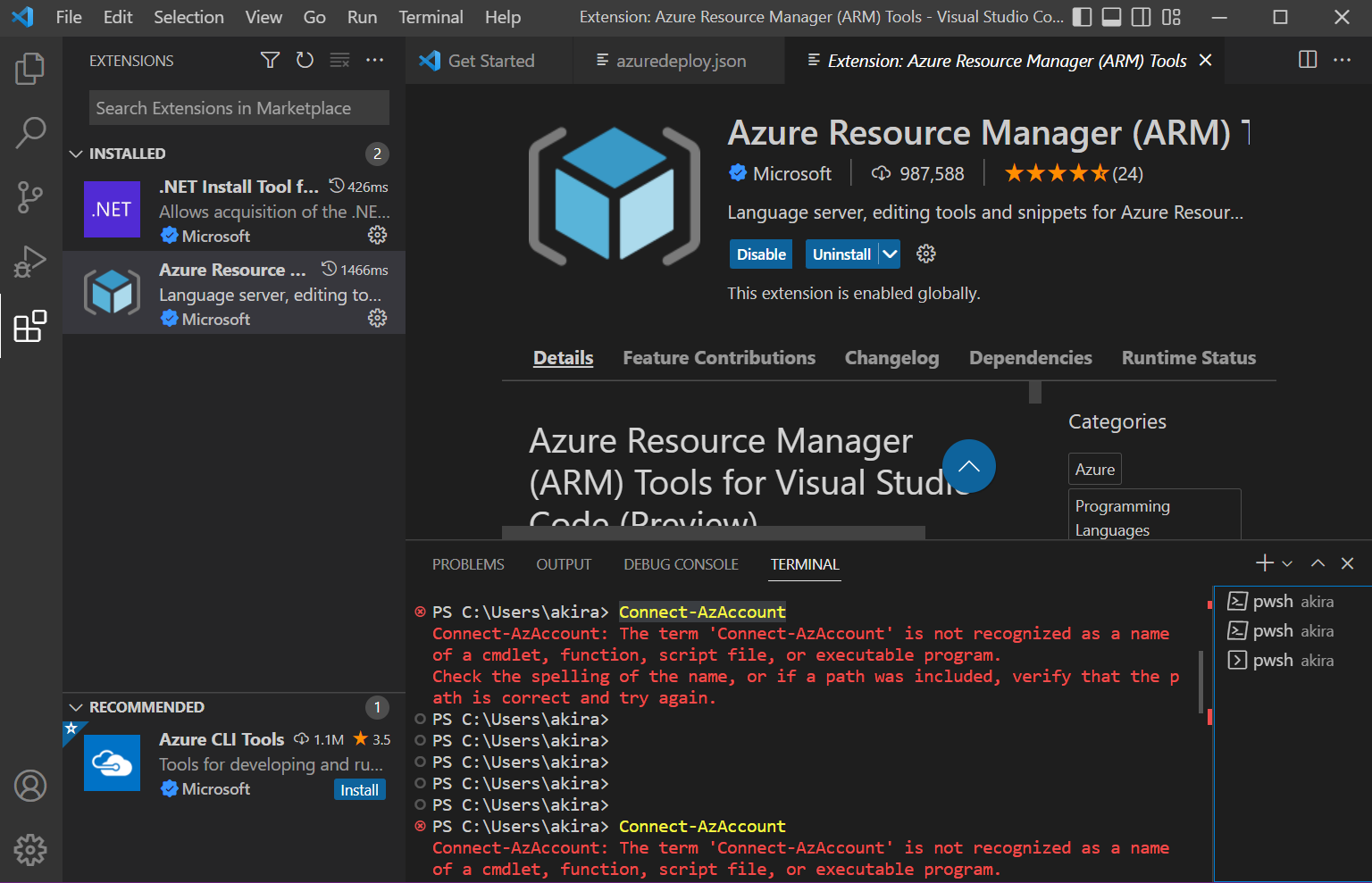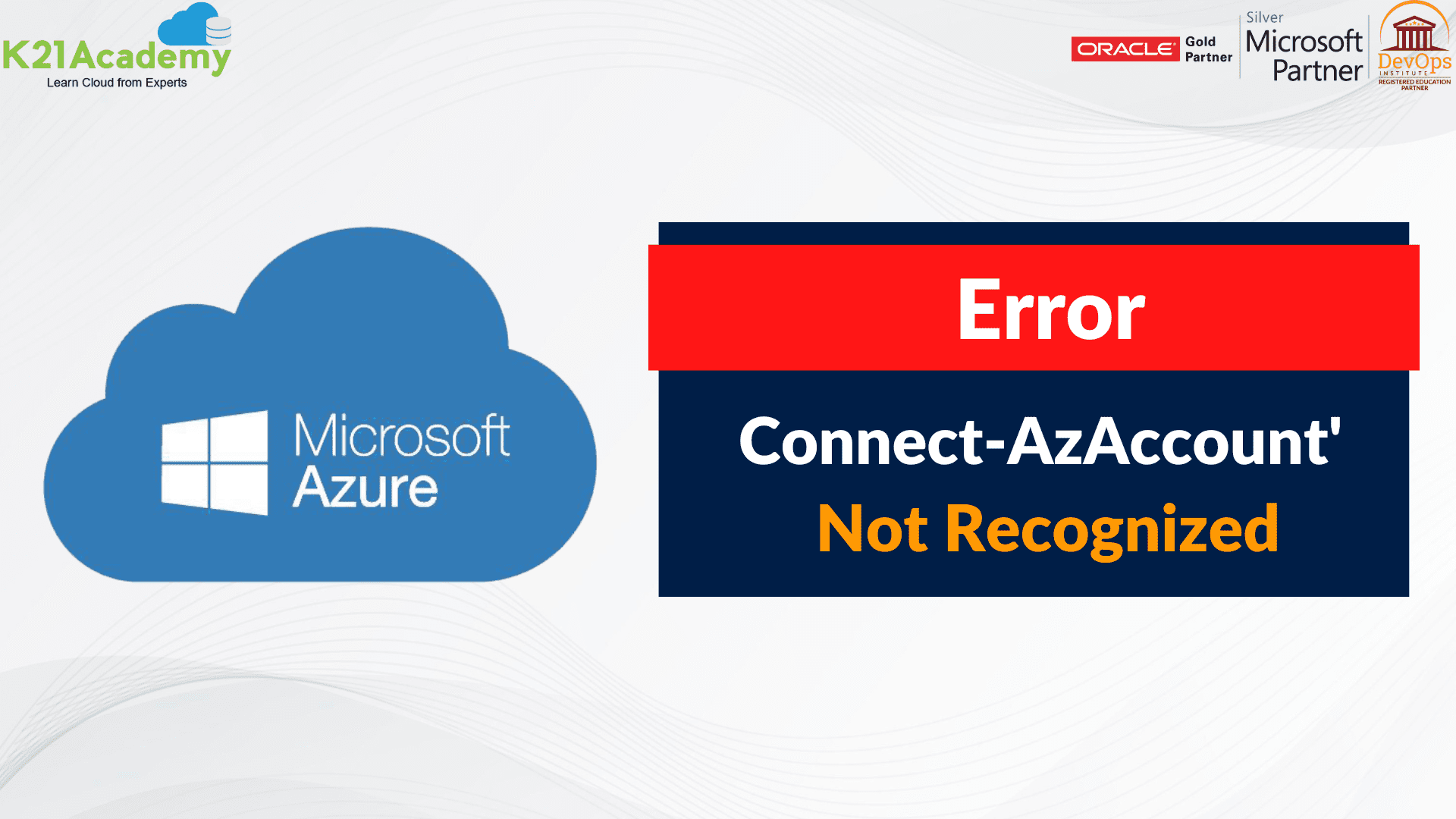An AZaccount, or an Azure Account, is also a user account that allows a user access to Microsoft’s Azure services. Azure accounts are used for both administration and acquisition of resources in the Microsoft environment. This connection enables users to harness a huge Azure ecosystem of compute, network, database, and analysis services.
Key features of an Azure account:
Unified Management: This environment is created and run from a single, centralized service portal to manage resources, deploy applications, and monitor performance.
Scalability: Use some services that may be developed depending on the client’s requirements.
Security: Incorporate the other security features that are readily available in Azure, some of which are, security and identity, as well as data encryption.
Integration: Currently it links well with other Microsoft products and other third-party services.
Connecting to an AZAccount:
The following is a detailed procedure as a guide to the process of undertaking a successful SWOT analysis.
Logging into your Azure comes with several stages, depending on the portal involved, Azure CLI, or PowerShell. Here’s a comprehensive guide to each method: Here’s a comprehensive guide to each method:

1. Azure Application Gateway with Portal
The Azure Portal is one of the modules of the Azure suite; it is an online interface through which a graphical view of the resources created in Azure can be attained.
Steps:
Open Your Browser: Open the web browser of your choice.
Navigate to the Azure Portal: Type www.azure.com.
Sign In: Log in to our Azure account. If you do not have an account, you can even create the account right from the portal.
Two-Factor Authentication (If Enabled): If the given account has enabled two-factor authentication, then the user has to complete the other security steps involved with the process.
Access Your Dashboard: Once you are logged in then you will be redirected to the Azure Dashboard, where the user can manage his or her resources and services.
2. Connecting Using Azure CLI
Azure CLI is a utility application used to manage the resources in the Azure environment via commands.
Prerequisites:
Install Azure CLI: The first step that you are required to follow is to download and then install Azure CLI from the Azure CLI installation guide.
Command Line Interface: Make sure you have access to the terminal application like cmd for Windows OS or Terminal for macOS/Ubuntu.
Steps:
Open CLI: Open your terminal if you are using the Linux operating system or a command prompt if you are a Windows user.
Log In: The best first step is to run the command az login. This will open the web browser and you will be prompted to sign in.
Authenticate: With this browser client, you sign in with your Azure account credentials. Continue with the prompts to finish the authentication.
Verify Connection: To ensure that you are connected, run the following command:
az account show
This command will provide information about your current Azure subscription and account.
3. Connecting Using Azure PowerShell
Azure PowerShell is a collection of cmdlets for managing Azure resources from PowerShell itself.
Prerequisites:
Install Azure PowerShell: On a PowerShell, install the Azure PowerShell module. You can use the installation instructions that are provided in the Azure PowerShell installation guide.
Steps:
Open PowerShell: Start PowerShell on your computer.
Import-Module: To do this, run: stars: require “azure module loaded”
Import-Module Az
Log In: Use the command Connect-AzAccount to make the connection to the account.
Connect-AzAccount
Authenticate: You will be asked to log into the account. Sign in to Azure and provide your credentials; if there is an MFA, you will need to complete it.
Verify Connection: As part of confirmation, you should use the following:
Get-AzContext
This will display basic details of the current Azure subscription and the context in which you are working in.
Troubleshooting Common Connection Issues
Again, logging on to your Azure account may be quite interesting, though it can sometimes prove to be a bit tricky. Here’s how to troubleshoot some common issues: Here’s how to troubleshoot some common issues:
1. Authentication Errors
Issue: => I cannot enter the account or get an authentication message.
Solution: Check into a couple of things where, did you use the correct credentials in the right format and does your account have the right permissions? Two-factor authentication (2FA) is frequently enabled; ensure you participate in the further steps to verify the account.
2. Network Connectivity Issues
Issue: This means you can fail to access Azure services or there are connectivity issues with the applications.
Solution: Make sure your computer is connected to the Internet and that there are no settings in the firewall that block it. Please, make sure the network through which you access the Internet enables making connections to Azure endpoints.
3. Subscription or Permission Issues
Issue: Facing issues that revolve around subscriptions and permission errors.
Solution: Check that the subscription in Azure is enabled and confirm that you have permission to make changes to the resources you are working with.

Frequently Asked Questions
1. How do Azure Portal, Azure CLI, and Azure PowerShell differ from one another?
Azure Portal: An application that provides a graphical front-end on a web browser for the management of Azure resources.
Azure CLI: A utility that can be used to interact with an instance of Azure using command-line operations.
Azure PowerShell: A collection of commands for working with Azure resources by PowerShell scripts.
2. Can I use Azure CLI and Azure PowerShell simultaneously?
You can use Azure CLI & Azure PowerShell side by side on the same machine. They are free-standing and can be utilized depending on the individual’s desire or depending on the circumstances that prevail.
3. What can you do to comprehend multiple subscriptions in Azure?
Customers also have the flexibility of subscribing to multiple subscriptions through the use of Azure CLI or Azure PowerShell. If working in Azure CLI, then you can use the command ‘az account set –-subscription “Subscription Name”. In PowerShell, to change the subscription, use the command Set-AzContext -Subscription “Subscription Name.”.
4. What measures should be taken when one forgets his/her Azure account password?
To change your password if you have forgotten it, the option of ‘Forgot your password?’-clickable at the bottom of the Azure sign-in page can be of help. I will read the given instructions on how to get your account back on track.
5. Can HTTP be used to log in to Azure automatically?
Yes, logging in to Azure can be automated using service principals as well as managed identities for applications. This approach is only suitable for automated scripts, as are the other login methods that cannot support a human login process.
Conclusion
Logging in to Azure is one of the key tasks for working with cloud resources efficiently. No matter if you are using the Azure Portal, Azure CLI, or Azure PowerShell, knowing the basic connection mechanism will assist you in getting the most out of the solution.
Azure has different methods of cloud operations to appeal to a variety of users and scenarios. Thus, by applying all of the provisions described in this guide, you will be able to connect to the AZAccount and effectively manage your cloud resources. Thus, it is necessary to troubleshoot the most common problems and learn about the differences between various methods of access to increase your productivity within the Azure environment.
However, by keeping abreast with the current trends in cloud computing, specifically Azure, one will be in a better position to solve real-life problems in managing cloud resources while fully maximizing the options offered by Azure.




